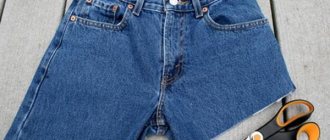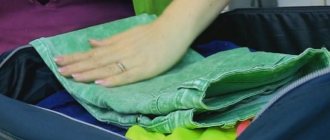Jeans have been the most popular item of clothing in both men's and women's wardrobes for several decades in a row. An invention of 19th-century Americans—pants made of thick denim—has conquered the world so much that even when visiting monarchs, some movie and show business stars wear worn-out blue denim trousers. Journalists from the MIR TV channel recalled the most interesting facts about the history of denim and why ordinary work pants caused one of the most significant revolutions in the fashion world.
From mines to social events
The last place on Earth where you still cannot meet a person in jeans is a reception with the Queen of England. Despite her advanced age, Elizabeth II sacredly respects traditions, and therefore she is rightfully considered the most elegant woman in all of Foggy Albion. The monarch is famous for the fact that in her entire life she has never worn not only jeans, but even classic trousers.
At receptions with the Queen of England, there is a strict dress code: ladies come in dresses, men in tuxedos. This rule was violated only once in the entire history of the reign of Elizabeth II, when Hollywood actress Julia Roberts, arm in arm with the legendary musician Mick Jagger, came to a reception in high-waisted blue jeans and a regular T-shirt.
It has long been believed that jeans were invented by dashing Texas cowboys who needed durable pants for long periods in the saddle, but this is not entirely true. 2021 marks the 145th anniversary of the first patent for jeans. It was received by Leiba Strauss - the future Levi Strauss - a Jewish emigrant from Belgium on May 20, 1873.
The patent was issued for the production of "strapless work overalls with pockets for a knife, money and coins." Initially, jeans were made as work pants for gold miners, because at that time the Gold Rush was raging in California, and workers needed durable pants that could withstand long wear.
According to designer Vladimir Bukhinnik,
Strauss sold his first pair of jeans for one dollar and 26 cents. Feeling the success of his deal, he began to travel to the villages where the families of gold miners lived, and became interested in what particular details of clothing were important to them at work. This is how patch pockets, double stitching, and dense fabric were invented that were easily washed off dried dirt and withstood the test of humidity.
Gradually, the demand for simple trousers in these villages began to fall: ordinary fabric was torn in the pocket area due to the fact that workers had to put a lot of strain on them. But for denim pants, all these problems were nothing.
Where did the name “jeans” come from? It is known that at the end of the 16th century, sailors in the Italian city of Genoa wore canvas pants. The French who invented this fabric began to call it in the American manner “Genes”, or “Genes”, which meant “Genoa”.
The fabric for them was produced in large quantities at a factory in the French city of Nimes - Twill de Nimes. This is how the fabric received its modern name “denim”, which has remained synonymous with the word “jeans” to this day. True, denim pants became true jeans only when the American master Jacob Jevis suggested that Ostrich put rivets on the pockets for increased strength. Initially, these rivets were intended for horse harnesses.
History of jeans
Leib Strauss (who later changed his name to Levi Strauss) did not find gold on the West Coast of the United States, but this did not prevent him, a naturally talented seller of anything, from founding an empire that exists to this day.
When one fine year everything that was brought was sold, he only had canvas left, which no one wanted to take in the form of rolls of fabric. Then the enterprising Leib made pants out of it (after all, if life gives you a lemon, isn’t the best solution to make lemonade out of it)? The pants were selling like hotcakes! And inspired by such luck, Strauss offered the local tough guys an unprecedented novelty - thick, practical indigo-colored trousers made from fabric brought from a French city called Nîmes!
It was a real gold mine. Soon, clothing made from Nîmes fabric (now known as denim) became very popular throughout America. Making his ancestor a very rich man. One hundred and fifty years have passed since then, and Levi's jeans (I think everyone guessed that we are talking about them) continue to remain an absolute classic of the genre.
Jeans against politics
In the USSR, the first jeans appeared only in the mid-50s of the last century and immediately became the subject of a big political game. The fact is that after the death of Joseph Stalin, Georgy Malenkov became the leader of the country. Under him, industry and the national economy made a rapid turn towards people. Malenkov planned to devote all his efforts to the development of the light and food industries, but the conspiracy of party officials dissatisfied with this policy was successful, and in 1955 Malenkov was removed from the post of leader of the state.
Nikita Khrushchev, who replaced him, sharply changed development priorities towards heavy industry and production. Who knows, if Malenkov had remained in power, jeans could have come to the Soviet Union earlier, but everything happened differently.
“It was connected with big politics, even despite the fact that these were just clothes,” notes writer Alexander Myasnikov.
According to him, Malenkov was accused of wanting to give way not to the construction of heavy machine tools, but to simple clothing, which the Soviet people really lacked. Jeans, chewing gum, and toys became weapons of the great political game in the Cold War. The people who did not have these simple benefits felt more disadvantaged.
A real denim boom occurred in the USSR in 1957 during the World Festival of Youth and Students in Moscow. Foreign guests brought bright colors to the dull Moscow fashion. Jeans became the item of clothing for fashionistas and fashionistas in large Soviet cities.
Fartsovniks resold American denim pants for about 200 rubles, despite the fact that the engineer’s monthly salary did not exceed 100–120 rubles. By the way, it was jeans that became one of the main factors in the manifestation of the shadow Soviet economy. The underground workshops, having established the mass production of Texas pants, opened up a wide avenue for speculation.
What is the alternative nature of chinos?
And this alternative really exists. Thus, various publications like Forbes and the Financial Times, which study the business sphere, report that the business casual style that rules today in business circles does not welcome jeans; they are too informal for the office. But chinos, on the contrary, are one of the main wardrobe items of this style. What is the reason? The fact is that such trousers usually have a stricter style and more neutral colors.
If indigo, which traditionally accompanied them, is invariably associated with jeans, then khaki is native to chinos, since they came into everyday life from the army. And today, models in beige and gray shades and white have become no less popular. These alternative trousers have another characteristic feature: their back pockets are usually not patch pockets, like jeans, but welted, which adds rigor. However, it is always important to research your specific model as there are many options.
Million thanks to the suit
There is a saying in America: “God made people different, but Colonel Colt made them the same.” It is about the fact that the Colt revolver equalized the rights of both the strong and the weak. The same can be said about jeans, because this item of clothing has become common to the wardrobe of a wide variety of people. Today, they are worn by the heirs of the British crown, workers, and popular movie stars.
The thing is that before the 30s of the 20th century, clothes meant much more to Americans than they do today. Without a decent suit it was impossible to achieve success and make a career. It is known that, for example, the famous multi-billionaire Aristotle Onassis, who bought Jacqueline Kennedy as his wife after the assassination of her husband John, began his career as a washer and spent the first $40 of his earnings on an expensive suit.
“The suit actually has a huge impact on the quality of life. There are historical examples of how Onassis, as a very young, ambitious man, bought new clothes only in order to move to a new level in society,” shares the director of the fashion house, designer Irina Selyuta.
On the sidelines of an English club, a smart, resourceful, but extremely poor young man learned that a tobacco crisis was threatening, after which he decided to smuggle tobacco from Mexico. The first scam helped him earn a million.
Jeans were brought to Europe and other countries such as Japan by American troops during World War II. At that time, jeans were part of the uniform of the US Army, so the Americans brought to Japan not only atomic bombs and rock and roll, but also practical pants with the “Made in the USA” label.
By the way, Japanese denim is still considered one of the highest quality in the world. They say that the highest quality of jeans in Japan is explained by the fact that after the war the Americans sold them their outdated equipment, which allowed them to produce very high-quality fabric.
Recently, Japanese fashion designers marketed anti-aging jeans. The fabric is impregnated with amino acids, which prevent age-related processes and protect the skin from harmful bacteria, the effect lasts two years. 55 thousand pairs of these jeans were sold out in four days. The Japanese even managed to combine the latest scientific achievements with fidelity to tradition in their clothing.
Difference between jeans and trousers
Definition
Jeans are a type of practical casual trousers
Pants Refer to either outerwear that covers the lower body, with a separate section for each leg (in the US), or underwear (in the UK).
Happening
Jeans are worn for casual occasions.
Pants (trousers) can be worn for formal and casual occasions.
durability
The jeans are durable and highly elastic.
Other types of pants are not as durable as jeans.
Varieties
There are different types of pants such as trousers, jeans, khakis, corduroys, chinos, etc.
There are different colors, designs and fits of jeans .
Colors
The pants come in different colors.
Jeans come in a variety of colors, but blue denim is the most popular of all jeans.
“Jeans Jeans Jeans” by Jcjeansandclothes – own work.
What jeans are is usually not in doubt. Everyone can easily answer that these are most often blue pants made of thick cotton, and many will even say that the material from which they are made is called denim. And if you wonder what chinos are? There are a lot of articles on the Internet devoted to this topic, but everywhere the broadest possible definition is presented: light cotton trousers in a casual style. Sometimes it is also added that they are made of twill weave fabric with a bias ribbed or herringbone pattern.
Herringbone? Yes, we are talking about the same hem that we so often see on jeans. And this is not surprising, because denim is also created using twill weaving. In addition to denim and chino—these are the names of the fabrics from which jeans and chinos are made, respectively—there are a number of other twill weave options, but let’s leave that aside. So how do chinos differ from jeans? Many people want to know the answer to this question, since the phrase is often heard that the former serve as an excellent alternative to the latter, while their model variety also seems to be wide.
What jeans are in Hollywood?
Jeans owe their popularity largely to Hollywood. In Westerns of the 1930s, dashing cowboys all wore blue denim. In 1935, Vogue magazine published an article about the ranch with pictures of girls in jeans - and this was no longer a uniform, but a new fashion.
But the real revolution for jeans came in the 1950s, when the screen star and everyone's favorite Marilyn Monroe appeared in jeans in the film The River Never Flows Backward. Many years later, these jeans were sold for $75,000 to singer Britney Spears. In 1956, the cult film “Rebel Without a Cause” was released with James Dean, who also wore denim pants for half of the scenes.
“Aesthetics have penetrated so deeply into the minds of mankind that the most feminine divas of Hollywood also dressed in denim suits - Marlene Dietrich or Marilyn Monroe. All progressive humanity began to wear such clothes,” says designer Vladimir Bukhinnik.
Why jeans became the clothing of gold miners
Jeans are celebrating an unofficial birthday: if you go by the Levi Strauss product label, which has long said “Since 1850,” they began being produced 150 years ago—in 1850. In 1950, Levi Strauss & Co. widely celebrated its centenary in San Francisco, where it was founded. And no one mentioned that Levi Strauss, who emigrated with his family from Bavaria to New York in 1847, founded his company in the Wild West in 1853 to sell strong canvas pants to gold rush conquerors of the Wild West.
There is a legend that Levi Strauss sold his first pants in June 1850 for $1.46 apiece. However, there is no confirmation for her. The fact is that the inscription on the label “Since 1850” is just a marketing ploy, a beautiful number that appeared after World War II. However, it was Levi Strauss who really came up with the idea of attracting the attention of the consumer in this way - he did not invent pants made of dark blue denim with rivets (you will soon find out who did this), but he managed to advertise his product in such a way that he convinced the Americans: his pants - the strongest, best pants.
Advertisements, printed flyers, price lists, and colorful catalogs distributed by traveling salesmen before World War II said "Since 1853."
And after World War II, the figure changed - although this error has now been corrected.
Since 1853, gold miners' trousers produced by the Levi Strauss Company in San Francisco were actually made of canvas. But soon the fabric was indeed replaced with dark blue material purchased in Italy and France. A little more than 20 years later - in 1871 - Strauss teamed up with a tailor who bought accessories from his store, named Jacob Davis. Together with him, in 1873 - and this date will be considered the real year of the birth of our jeans - they patented a new type of trousers with copper rivets on the pockets, which were intended to strengthen weak points.
Today we consider jeans to be anything made from denim, but in fact the material itself was invented long before - patented jeans differ from simple trousers precisely in double stitching and rivets on the pockets.
And the fabric itself was invented long before the Gold Rush - in the Old World. And it got its name from its geographical origin.
Denim originated in northern Italy—researchers suggest that the word “jeans” comes from the French name for the Italian city of Genoa, Gênes. It was in this city that cotton wool of “average quality and reasonable price” was produced, reminiscent of cotton cord, a material whose weaving created longitudinal ribs. This fabric was used to make clothes for workers in various professions, including sailors.
A similar cotton material, only of twill weave, was made in French Nîmes - therefore, the fabric from which current jeans are made, denim, comes from the French “De Nîmes”, that is, from Nîmes. It was considered denser and of higher quality than Genoese denim.
Both materials, dyed dark using dye extracted from the indigofera incinerator plant growing in India, were known back in the 16th century. In the 17th century, a mention of dense blue material appeared in Great Britain, where clothes for the poorest were also made from it.
For strong blue pants with rivets, in 1878, German chemist Adolf Bayer invented a synthetic dye. At that time, nothing foreshadowed that the trousers of gold miners of the Wild West and Genoese sailors would become an integral part of the wardrobe of almost every person in the second half of the 20th century (and for residents of the USSR - even a dream).
However, it is the rivets that make these trousers jeans, and it was Jacob Davis who suggested equipping trousers for gold miners with them - in 1872 he wrote to Levi Strauss with a proposal to strengthen weak points with them, such as the corners of pockets, and he accepted this proposal.
On May 20, 1873, they received U.S. Patent No. 139,121, entitled “An Improvement for Pocket Flap Fasteners.” The first jeans that Levi Strauss produced had two pockets in the front and one in the back, and at the end of the 70s, a small watch pocket was added to them, which is still sewn onto classic models, although no one knows its purpose anymore. .
Jeans achieved their classic look - with five pockets (three in front, two in back) - in 1901, when Levi Strauss decided to equip model No. 501 with a back left pocket.
Today, the United States remains the world leader in jeans production. American companies produce 39% of all products. In second place are clothing manufacturers from Western Europe, they own 20%, Japan and South Korea share 10% each, and the rest of the world shares 31%.
Hippies who dressed up the whole world
The global denim boom swept the whole world in the 60s of the last century, during the era of the spread of the hippie subculture. Jeans, as they said then, painted the streets of America and Europe blue. Over time, they began to decorate their pants with rhinestones, stripes, beads and embroidery. These stylistic additions are still popular today.
The popularity of jeans has reached its peak: today they are worn by people of all ages and nations. In China, in 2006, they even opened a monument to jeans - it is a ball made of pants of different shades of blue, weighing up to two tons. The denim line is still produced in all fashion houses: jeans are made in all colors of the rainbow, straight and flared, stretch; suits, dresses, skirts and shorts are sold from denim. Jeans are specially aged, worn, torn and decorated with jewelry.
It is no coincidence that the famous fashion designer Yves Saint Laurent once said that he regretted only one thing in his life - that he did not invent jeans. But if you think that today you can buy classic jeans with the “Made in USA” label, then you are deeply mistaken. The last factory to produce real jeans closed in the United States in 2006. Since then, even Americans themselves have been buying jeans made in China, Indonesia, Mexico and other third world countries with cheap labor.
Watch new episodes of the X-Files program every Saturday at 8:00 Moscow time on the MIR TV channel.
With pockets for knife, watch and money
Denim was first mentioned in written American sources in the mid-18th century. A patent for the manufacture of overalls for workers (without straps) with pockets for money, a knife and a watch was issued on 05/20/1873.
This day forever became the date of birth of the word “jeans”.
The first jeans in the modern sense were made in the late 19th century, as clothing for working people on farms and mines in America.
When Nevada tailor Jacob Davis decided to make a pair of durable lumberjack trousers, he came up with the idea of strengthening them with rivets. The method proved extremely durable and the trousers soon became in great demand.
Davis realized the great promise of his own invention, but he could not patent it. He wrote a letter to his own San Francisco supplier, Levi Strauss, asking for help.
Note:
The release of the first, oldest jeans in the world, LEVI'S dates back to approximately 1879.
The patented trousers were made from two types of fabrics, fine cotton and denim.
The denim fabric was very comfortable, softening over time, and the indigo color chosen gave the jeans a unique character. The indigo dye did not penetrate the cotton yarn like other dyes, but settled on the outside.
Jeans changed as they were worn, as if becoming a reflection of people's lives.
Thanks to its qualities, denim did not need frequent washing and was durable. The Levi Strauss archive contains a 1920 letter from miner Homer Campbell from Arizona.
He described how he wore jeans every day for three years: “Attached is one sample of workwear, the head of your fabric department can determine that everything I write is true. I bought the trousers in Brighton early in 1917 and wore them every day except Sunday. I have never worn anything other than Levi Strauss for the last 30 years.”










